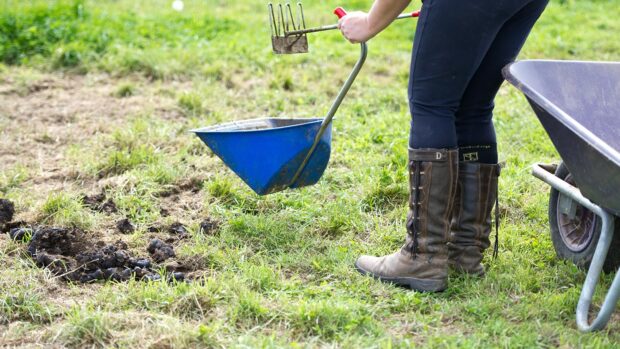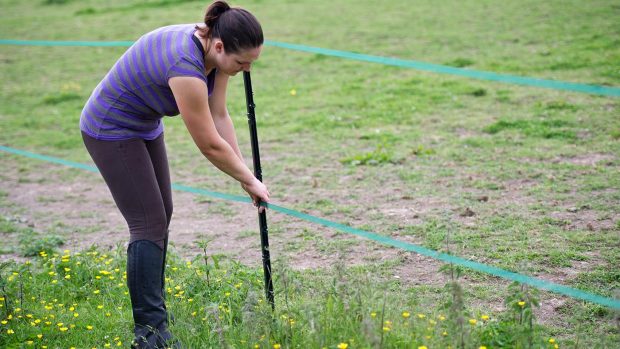Ragwort, the common weed that plagues our paddocks, is high on the agenda of concerns for horse owners. But why is it important and what is the most effective way to remove it? H&H explains...
“Ragwort spreads very easily and because it contains the toxic compounds pyrrolizidine alkaloids, if eaten in any state, it can cause irreversible liver damage,” explains Gemma Stanford, British Horse Society’s (BHS) head of welfare.
“Ragwort poisoning damages the liver, resulting in severe disease and in some cases death.
“While most horses won’t immediately choose to eat ragwort due to it’s bitter taste, some develop a taste for it if nothing else is available. It also loses its unpalatable taste if it’s cut and dried and found in forage, but it doesn’t lose its toxicity.”
If left to grow, ragwort can spread quickly and easily which means keeping on top of its growth is vital. Under the Weeds Act 1959, landowners and occupiers can be ordered to control ragwort on their land to prevent the injurious weed from spreading.
How to spot the young plant
Ragwort’s first year of growth is called the rosette stage and its leaves look irregular with jagged edges.
“Rosette growth can vary greatly and they are often dark green but can also be tinged with purple,” says Emmeline Hannelly, BHS education officer.
“Even at rosette stage, the roots are relatively thick and quite tough.
“Ragwort seedlings appear from autumn to June and are usually spotted when around 10-15mm high, although often they go unnoticed until they reach rosette stage. They have a spade-shaped leaf that is notched at the top.”
Flowers usually appear from June to late October — the plants have large, flat-topped heads of yellow flowers.
“Seeds ripen in July and August and are normally shed from September,” adds Emmeline. “One plant can produce thousands of seeds, which can lie dormant for years. Established plants have a spreading root system which branch and spread quickly too.”
How to safely remove ragwort
Ragwort is biennial (flowers every two years) and its seeds lie dormant in the ground which means removal of the plant is required annually for at least two years to ensure the weed is brought under control. A combination of methods may be required to fully remove it, and it is vital that dead ragwort is cleared from the field as it becomes more palatable, but is still as toxic.
“We always advise wearing gloves when handling ragwort due to its toxicity,” says Gemma.
“A herbicide is one option of removing ragwort and should be used at the rosette stage in spring, but horses need to be removed from the pasture being sprayed. Only approved products should be used (a list can be found at www.pesticides.gov.uk), and some products require a qualified specialist to carry out the application.
“Herbicides should only be used on mild, calm days ensuring the vegetation is dry, and horses shouldn’t return to the pasture until the ragwort is fully disintegrated, which can take a few weeks.”
Biologist Dr Peter Lutman has also encouraged owners to act prior to the plant flowering, calling for them to remove it from their land by the end of April: “People wait until the ragwort flowers and then panic as it springs up everywhere. It’s much better to treat it in the spring before it starts growing.”
Other considerations include improving the pasture — ragwort thrives on poor quality pasture so improving the grass growth will make it harder for it to grow.
Hand-pulling before the plant has flowered is another option for smaller parcels of land, but you must ensure the whole of the root is removed, as any fragments left will result in the ragwort regrowing. Pulling when the soil is damp makes the job easier and more efficient.
How to dispose of ragwort
As ragwort is able to seed, even after removal from the ground, it should be placed in an enclosed container or secure bag — paper feed bags are best as they can be burnt.
“An important part of ragwort control is the safe and effective disposal of the plant to help reduce the risk of further spread,” explains Gemma. “The amount of ragwort to be disposed of, the facilities available on-site and local resources available will affect your disposal options.”
There are three main options for disposing of ragwort safely: controlled burning in small quantities and a safe location away from buildings and animals; rotting in a secure compost bin or similar with a lid; and using a waste-management company who will remove the ragwort for you.
You might also be interested in:

5 common plants that could kill your horse
While many plants can be poisonous if eaten to excess, there are some poisonous plants that horses should avoid at

Renting your field for grazing: where does responsibility lie?
The prospect of ponies grazing peacefully outside your kitchen window is an attractive one — but it is crucial to

Subscribe to Horse & Hound magazine today – and enjoy unlimited website access all year round
Horse & Hound magazine, out every Thursday, is packed with all the latest news and reports, as well as interviews, specials, nostalgia, vet and training advice. Subscribe today and enjoy the magazine delivered to your door every week, plus unlimited website access and digital versions of the magazine dating back to September 2012.




